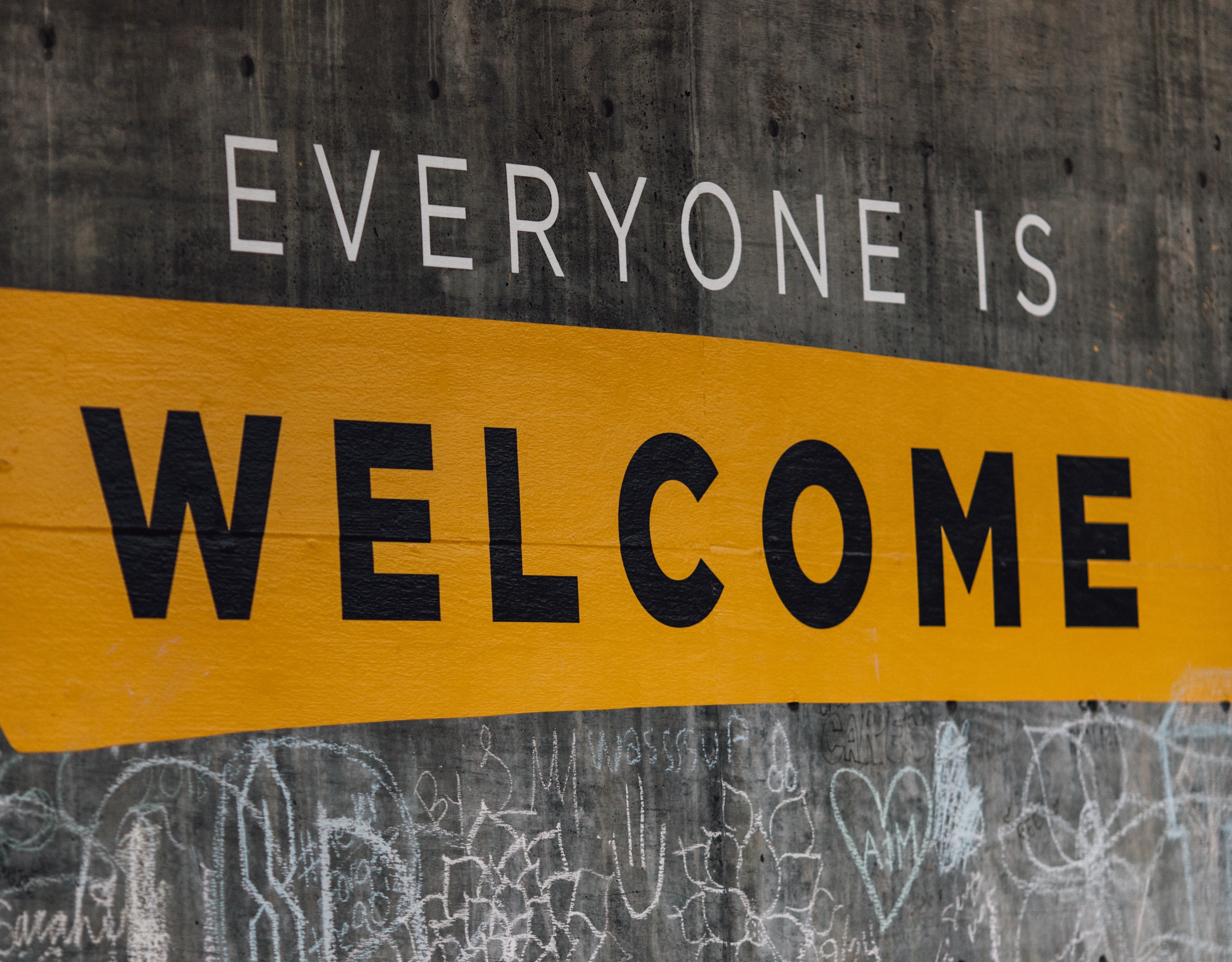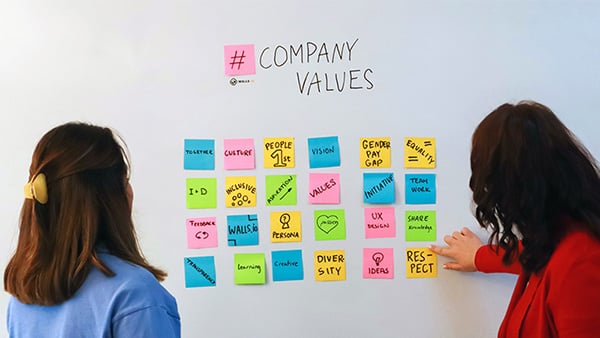Do remote companies build more inclusive cultures?
It's been almost three years since the pandemic had office workers hastily grabbing their laptops and heading home.
Manage your equity and shareholders
Share schemes & options
Equity management
Migrate to Vestd
Company valuations
Fundraising
Launch funds, evalute deals & invest
Special Purpose Vehicles (SPV)
Manage your portfolio
Model future scenarios
Powerful tools and five-star support
Employee share schemes
Predictable pricing and no hidden charges
For startups
For scaleups & SMEs
For larger companies
Ideas, insight and tools to help you grow

When you mention diversity and inclusion (D&I), thoughts often turn to gender equality, LGBTQ rights, race and disabled adaptations. But this doesn’t include other groups of under-represented and discriminated individuals.
Non-binary, trans, carers and neurodiverse groups are coming to the fore. Progressive companies need to create workplaces that build an inclusive culture for every minority.
Improving diversity should be a fundamental goal for every business - from global conglomerate to early-stage startup. In many ways, startups have an edge over large organisations, as they have greater freedom in developing a company culture from scratch. There’s more flexibility and ease when implementing new practices - and fewer legacy issues that may stymy change.
The business case for diversity is strong. Inclusive company cultures experience greater creativity, problem-solving and innovation. 81% of tech founders state that improving diversity has boosted their innovation, while 63% have greater access to talent and 67% have better problem-solving. Companies with diverse founding teams have generated 20% higher revenues.
In the startup ecosystem, for every dollar of venture capital invested, female-led startups generated 78 cents of revenue. Compared to male-led startups that only managed 31 cents.
The reasons for promoting diversity are clear. Less so are the many groups that founders must consider in their D&I practices. But identifying such groups at an early stage is critical, as any gaps in your D&I will only widen as your company scales.
Trans employees have distinct challenges in the workplace that differ from their lesbian, gay or bisexual colleagues. Physical spaces, for example, often pose an issue that many employers are unaware of. A trans person may feel forced to use a bathroom that doesn’t correlate with their gender identity. They may face harassment or discrimination over their transition or appearance.
Creating a trans-inclusive environment will help trans employees be themselves. It takes a lot of stress out of their work day, as they no longer have to keep up appearances. Employers can benefit from a trans individual’s unique perspective and experience, whilst improving acceptance and understanding amongst other employees.
Improving trans diversity is a multi-pronged approach that looks at your employment strategies and policies, language and workplace. Giving trans people an option over their bathroom and other gendered areas is the first step.
You should also consider your use of pronouns. Many people may introduce themselves using gender pronouns without a second thought. For a trans person, however, this is loaded with worry and potential consequence. Assuming someone’s gender pronouns based on appearance can cause offence.
Instead, use their chosen gender pronouns and educate others so that a trans employee feels comfortable in introducing themselves with those pronouns. Another proactive step is encouraging all employees to include their chosen pronouns in email signatures or to wear lapel pins to prevent miscommunication.
The same attention to detail must apply to your policies and recruitment materials. Make sure any HR guides include the words “gender identity or expression.” Avoid gendered language in job adverts and highlight the ways that you are a diverse employer for all minority groups.
A similar approach should be adopted for non-binary employees, who have gender identities outside of the gender binary. Their identities are not exclusively masculine or feminine.
This may involve revisiting some gender-exclusive groups (such as women in tech). 23 Code Street is a coding school targeted towards women and non-binary individuals. Founder Anisah Osman Britton explains: “One of the reasons I run a coding school for women and non-binary people is because we need more women of all sociodemographics to be sat at decision-making tables when new products and services are being created. Why? Because evidence shows that innovation is created as a reflection of the maker.”
She highlights the case of Apple’s first health tracker as an example of what happens when a team isn’t diverse enough. The first iteration included all sorts of metrics on activity, calories and blood alcohol - but forgot to include a menstrual tracker. Anisah goes on to say: “It is rare to see someone with a visible disability at a tech event; there is not enough awareness of neurodiversity; older people are lacking; and people of colour are under-represented, especially in higher-paid roles.”
Neurodiversity is another area to focus on. One in seven people are neurodivergent, meaning that their brain functions and processes information differently. This diversity of thought can be a blessing for innovation and out-of-the-box thinking. Neurodivergence includes autism, dyslexia, dyspraxia and Attention Deficit Disorders.
It’s fairly common, so you may already have neurodiverse employees working for you. However, they often struggle with a lack of understanding around their neurodivergence. You can help with this by proactively taking steps to make them feel valued, part of the team and to support their work.
Creating a workplace that supports neurodiversity is also key. Giving greater choice in workspaces and where people can work will help your neurodivergent employees choose environments that suit their needs. It also benefits the rest of your workforce.
Similarly, the options you put in place for carers will benefit other employees too. There are seven million carers in the UK and one in nine of them combine caring with a job. Flexible working can help carers fit their responsibilities around their role - whilst also helping working parents, new mums and people with extracurricular commitments.
Currently, one in six carers give up work or reduce their hours because of the stress of balancing responsibilities. Employers who support their carers will retain more of them. This can be done through creating support groups, naming them in documentation, carer awareness training and leading on carer-specific issues in the workplace.
Welcoming diversity in all of its forms will strengthen your startup. As Derrick Braziel, co-founder of MORTAR explains: “True strength comes from embracing diversity. A strong startup culture is important to retain talent.”
Your startup culture is born from the moment you take on your first hires. Diversity should be at its core from the beginning. Build a company that reflects the country, to meet the needs of everyone - customer, worker and investor.

It's been almost three years since the pandemic had office workers hastily grabbing their laptops and heading home.

Work Ghosting: Why UK employees are checking out without leaving, and why The Flexibility Gap matters to all companies. The big trends of 2025...

With many industries now offering more flexible working options, it’s never been more important to offer a competitive benefits package.